Mythological Mysteries of the Monster Manual
The 5th edition Dungeons & Dragons Monster Manual celebrated the fifth anniversary of its release in September. To mark the occasion, let’s spend today’s article examining one of the lesser-used creatures in its pages.
In case you missed the inaugural article in Frontline Gaming’s “Let’s Use Our Libraries” series, the idea is to dig out one of the many books in the D&D 5th edition line, select a creature at random, and develop an interesting scenario using that monster. Hopefully this allows you Dungeon Masters out there to save time on your next session prep by adapting this mini-arc into your existing campaign.
So let’s get into it!
Last time, we had our parties deal with a gang of unruly Grung. What foe can our gallant heroes cross swords with this week! The answer is revealed by a random page turn! Couatl – is that even a word?…huh and they’re lawful good?! …and I thought the little treefrog people were a writing challenge…
Couatl
(Monster Manual, Pg 43)
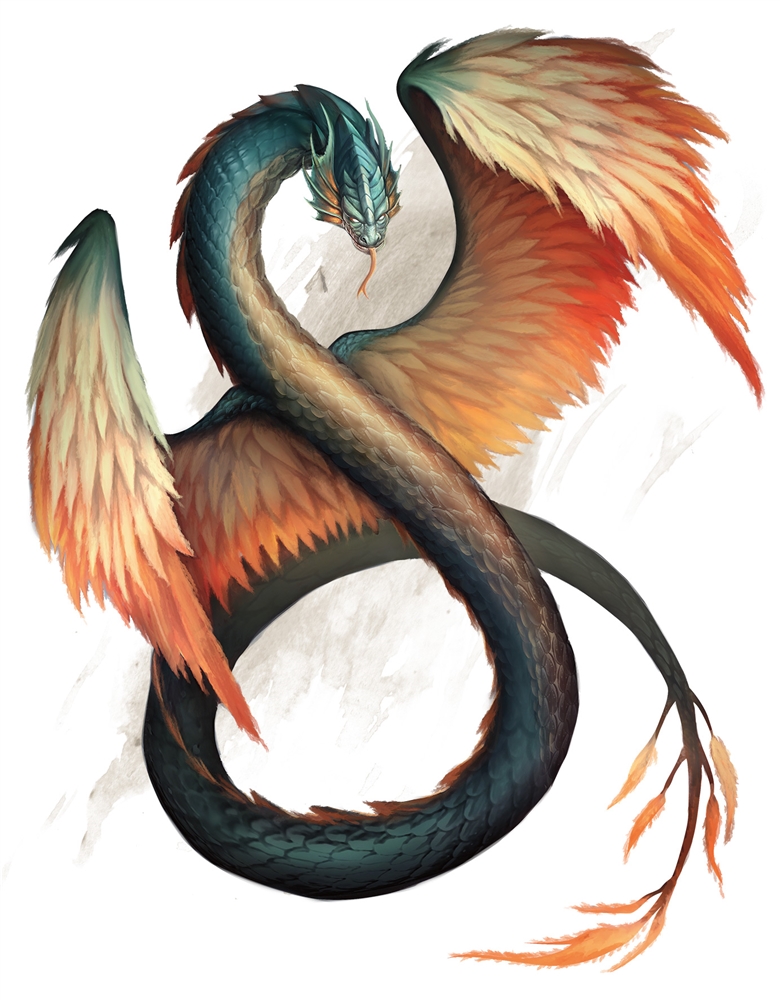 Couatl are winged-serpents inspired by Aztec mythology. Although they were first introduced to the game way back in 1977, not only have I never used a couatl in my home games – I’ve never even heard of them being used at any table. I can understand why they aren’t always at the top of a DM’s mind.
Couatl are winged-serpents inspired by Aztec mythology. Although they were first introduced to the game way back in 1977, not only have I never used a couatl in my home games – I’ve never even heard of them being used at any table. I can understand why they aren’t always at the top of a DM’s mind.
Their high wisdom & intelligence, coupled with a lawful good alignment, makes them unsuitable enemies to be simple “final dungeon room bosses”. Furthermore, their ancient Mesoamerican source material has not permeated the Western public consciousness anywhere near the level of European folklore and myth.
I thought it would be helpful to at least have a base understanding of Aztec myths and after a bit of online research…wow, the ancient Aztecs told each other some weird stories. A would-be sun god is clubbed out of the sky by his rival; humans are all devoured by jaguars, and later brought back into existence only to be all drowned in tears; and finally, the new sun god agrees to take the job as long as the people on earth regularly sacrifice themselves in his name.
For this week’s scenario – we’ll combine these real-world mythologies with the details provided by the Monster Manual. Specifically, how a couatl’s very nature is beyond mortal life which has made their existence governed by mystery.
Beyond Mortal Life. Couatl were created by “a benevolent god not worshiped since the dawn of time” (Monster Manual, pg 43) and thus are celestial other-worldly beings. They can survive for centuries without needing air or food. This divine origin also affords them powerful telepathic abilities and the ability to change their shape at will.
Even the couatl’s bite carries a strong anesthetic poison which can render its victims unconscious for up to a full day.
Governed by Mystery. Much like the strange-Aztec myths that served as its inspiration – the couatl must follow strange celestial rules. Couatl were brought into existence to be “guardians and caretakers” (MM, pg 43) and devote themselves entirely to that singular assigned task. Per the instructions of the forgotten ancient god – the couatl strives to keep the details of its mandate a secret from any mortals it may encounter.
But, the Monster Manual tells us that a couatl cannot tell an outright lie. Its existence as a creature which operates entirely in the shadows – without the ability to lie – only adds to the couatl’s strange and incomprehensible allure. Taking the above into account, it’s obvious that these peculiarities are what makes couatls unique and interesting. To get the best use out of our new divine winged-serpent friend – he will need to be more of a roleplaying challenge rather than a combat encounter for the scenario this week.
The Scenario (Appropriate for Level 5-6 characters)
Background
Countless eons ago – the gods of creation challenged one another for places of honor in the new cosmos. But the god who was selected to be the sun grew bored of traversing the sky every day. The First Sun became so lazy that he started to sleep through the morning; some days – he didn’t even bother to shine at all.
As the nights grew longer-and-longer, the God of Time could no longer tolerate the First Sun’s continued lack of punctuality. The God of Time waited until the First Sun took a nap behind a cloud and struck him with a great club. As the First Sun tumbled from the heavens, shards and splinters of the shattered club rained onto the material plane.
Years later, a God of the Lands found a strange red-bark forest had grown where a number of the splinters had landed. But, one shard that had pierced the earth was still on fire and no leaves grew from it. A portion of the First Sun’s power had been transferred to this particular splinter during the God of Time’s vicious assault. Not knowing its exact potential – the God of Land breathed life into a couatl and gave it express instructions not to allow the splinter to ever be used for nefarious purposes.
Dutifully the couatl arranged for the construction of an underground vault to hide the splinter. As a final act of devotion, the vault’s high elven builders ritually sacrificed themselves, binding their spirits to serve as the vault’s eternal guards. Millenia passed and the couatl continued its vigil.
In recent history, as the kingdoms of humans spread across the land, an unrelated shrine was built upon the site of the vault. The couatl, for its part, enjoyed the opportunity to interact with the pilgrims in its human form and was confident its now-forgotten master’s secret would be protected by the gods’ ancient incantations.
However, the God of the Land’s influence has begun to falter after millennia without worship. The illusory magics disguising the vault’s entrance have weakened as have the seals containing the sacrificed guardians. The ancient secret of the Shard of the Sun Feller is poised to be revealed to the mortal realm…
Intrigue
In the spirit of allowing DMs to ‘plug-and-play’ this scenario, the exact location of the shrine (and the hidden vault beneath) are flexible. In this example, the party is seeking to travel between two towns on opposite sides of a mountain chain and Pilgrim’s Lodge rests in the middle of the most navigable pass. But! It could easily be on a small island between two port cities, or at an oasis in between two cities separated by a desert. The key components are: the party is traveling between two locations and the shrine is a well-known rest area in the middle of their journey. Feel free to change the geography to fit your campaign world.
The journey into the mountains is quiet and with a profound stillness in the air. The party pass no travelers headed in the opposite direction. As they approach the shrine, they will begin to walk through clumps of the region’s famous fire-trees. Their bright red trunks and leaves are explosions of beautiful color in contrast to the surrounding grey rock.
The lodge itself is a small one-story stone keep surrounded by a protective wall. The gate is always kept open during the day – and closed by whoever is using the lodge at nightfall. Beyond the gate is a small courtyard containing a stable and a statue of Saint Bright the Redeemed. The statue’s base is covered with copper coins, prayer scrolls, and other trinkets left behind by visitors to the shrine.
Inside the structure is a modest dining hall, an even more modest kitchen, a chapel (containing the bones of Saint Bright), and sleeping quarters.
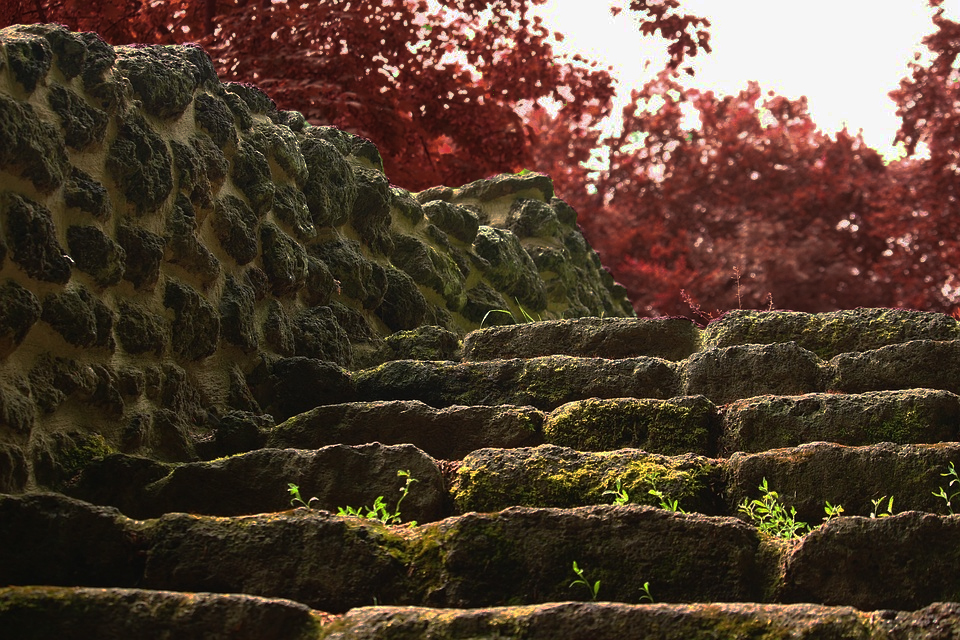
Currently, there are four residents of the Pilgrim’s Lodge.
Quinton Halftower a gruff male dwarf soldier and pilgrim who has been staying at the Lodge for the past week. Keeten Oak a resourceful female human fur trapper traveling through the pass. Ofelia Waters a young female human temple-initiate and finally, a mysterious an unnamed male human. The unnamed male human is actually the vault’s couatl in disguise. In order to circumvent its inability to lie, the couatl has allowed the other three to believe he is particularly devout pilgrim who has taken a vow of silence.
Despite not speaking, the couatl enjoys the company of new mortals. It happily drinks wine with them in the evenings and listening to the stories of the outside world. The couatl has never journeyed more than a mile away from the hidden vault so the concept of oceans and fast jungles captivate its imagination.
By the time the party arrives at Pilgrim’s Lodge, the day is almost done. Allow the party to explore the keep and/or interact with the other lodgers at their leisure. Quinton Halftower prepares stag meat in the cramped kitchen. Keeten Oak spends most of her time tending the horse she keeps in the stable (and safeguarding the wagon laden with furs she intends to sell in town). Ofelia Waters, not surprisingly, can typically be found in the chapel.
The first time a player character spends time in the chapel, the character can’t ignore the nagging feeling of being watched. But, of course, no source of the unease is readily visible. If the character can see into the Ethereal Plane – then allow them to spot the stoic, jaguar-masked ghost (Monster Manual, pg 147) of one of the sacrificed workers watching from the corner of the chapel. If the ghost realizes it can be seen, it uses its Incorporeal Movement to flee through the wall. If the ghost remains undetected – it strikes a copper offering dish to the ground as the player leaves the chapel. Whether or not the noise attracts the attention of any of the NPCs or PCs is up to the DM’s discretion.
Apart from this potentially eerie encounter – the remainder of the evening passes without incident. The party is free to claim any of the empty beds in any of the various sleeping chambers. Once everyone is asleep, the couatl spends the night using detect thoughts to probe the minds of the sleeping mortals. It is careful to only touch the surface of their minds to avoid detection. If necessary – it transforms into a beetle to move from room-to-room.
In the morning, the party realizes their stay at Pilgrim’s Lodge has been unexpectedly extended. An intense snowstorm rages overhead, completely obscuring the mountain pass. Again – if it makes sense for your campaign’s lodge to be set in a desert – then the snowstorm is a sandstorm; if your lodge is on an island – then rough seas pelt its shores. Whatever the cause – travel has suddenly become dangerous and extremely ill-advised.
The casual and jovial atmosphere quickly drains from the trapped travelers. Allow the players time to roleplay and explore the growing unease and frustration of the NPCs as the storm refuses to relent. Only the couatl in its mute-pilgrim identity remains cheery and animated. By nightfall, more than a few prayers for clear weather have been uttered.
A few hours after the lodge’s occupants fall asleep, the night air is pierced by a quick burst of near-feral screams.
Investigation
The source of the screams is easily discovered. Ofelia Waters’s corpse is found in the hallway outside of the chapel. Her until recently young face is crossed with wrinkles and the vibrant shock of black hair has completely turned white. The girl now looks to be 30-40 years older than she had only a few hours previous. Ofelia had the misfortune to stumble into a pair of the ghostly sentries who have been wandering further and further into the shrine as the vault’s binding magic fails. Their limited sentience considers any mortal a threat to the vault’s secrecy and showed no mercy to young Ofelia.
Behind her withered husk, one wall of the hallway flickers into-and-out-of existence revealing a hidden passageway behind the false wall. Upon closer inspection, it is obvious that the wall is nothing but an illusion created by magic. Learned characters will note that the glyphs maintaining the illusion are ancient and slowly failing on a DC 13 Intelligence (Arcana) check. A successful DC 18 Intelligence (Arcana) check allows a deeper inspection of the subtle glyphs interwoven within the illusory magic which are intended to bind the undead.
If the party doesn’t seem keen on exploring the newly revealed path – allow either Quinton Halftower or Keeten Oak to spearhead the idea and request the player’s assistance. Whichever NPC is not selected remains behind and refuses to wade blindly towards whatever killed Ofelia.
Either way, without breaking its self-imposed vow of silence, the couatl will do its best to signal its apprehension to the idea that anyone explore the entrance to the vault. Of course, it will accompany any who enter the vault to better preserve its secrets.
Once the party passes through the faltering illusion, the surrounding stonework of the hallway is of a completely different age and style of Pilgrim’s Lodge. Large carvings along the wall depict the progression of the First Sun’s complacency and the God of Time’s brutal reaction. Beneath their feet, the player characters notice that the passage tilts downward and brings them further underground. There are no sources of light in the vault.
After traveling for 20 minutes in this fashion, the hallway abruptly ends at a large, 40-foot wide hole in the floor. The vertical passage descends straight down an additional 80 feet. Twin sets of flat 5’x10’ stone slabs jut out from the walls and act a pair of spiral staircases that snake around opposite sides of the shaft. Each individual slab is 5ft horizontally and vertically apart from the next slab in the series. A multitude of grotesque and ugly stone faces are carved into the walls above each of the slabs. As the player characters begin to descend the stairs – ask everyone to roll initiative.
Player characters can easily jump up and down the slabs, but must use 5 ft of movement to do so. Once the party is entirely on the stairs two ghosts (MM, pg 147) appear at the top of the vertical passage and engage the party. During the next round of combat – more ghosts float through the walls and attack characters who have reached the lower levels of the shaft.
The total number of ghosts in this encounter will require a bit of fine-tuning on the part of the DM. Although they are only a CR 4 monster, parties without magic weapons or reliable sources of radiant damage will have their damage output significantly reduced thanks to the ghosts’ many damage resistances. At most, the ghosts should equal the number of party members. If you’re confident in your party’s ghost-busting abilities and want to increase the difficulty of the encounter, you could replace one with a banshee (MM, pg 23).
All of the ghosts in this encounter hide behind Aztec-style animal masks (coyotes, parrots, jaguars, etc) and the wounds of their ritual sacrifice as still apparent and horrific to view. If you decide to use a banshee – this represents an elven priestess who was sacrificed and bound into the couatl’s service against her will.
During the fight, the ghosts utilize their flying speed and Incorporeal Movement to fly through slabs to engage the party at will. Use the vertical nature of the encounter and the slabs interruption of clear line-of-sight to have one of the ghosts use Horrifying Visage against only one or two members of the party. Too many ‘frightened’ PCs could swing the action economy of the combat into an unintendedly deadly encounter – but the opportunity to instantly age a PC 1d4 x 10 years is just too intriguing to completely ignore.
To truly increase the peril of this encounter, have one of the ghosts attempt to use their Possession ability against one of the PCs (or potentially, whichever NPC joined their excursion). If the ghost successfully gains control over one of the mortals, the ghost immediately forces its victim to step from the slab into the open air of the pit. The Player’s Handbook states that every 10 ft a PC falls deals 1d6 bludgeoning damage (Player’s Handbook, pg 183).
The final piece of this combat encounter is the earlier mentioned stone faces. Whenever a living creature (besides the couatl) begins their turn on one of the slabs – have them roll a d20. On a 5-20; nothing happens. On a 1-4; the carved face opens its mouth and engulfs the slab in flame. On a successful DC 13 Dexterity saving throw, the creature must immediately move to an adjacent slab. On a failure, the creature remains in the path of the flames and takes 2d6 fire damage.
This whole encounter is begging for creative players to make interesting choices. Do they attempt to forgo the trapped slabs and repel down the side of the shaft on ropes? Would the acrobatic rogue attempt to leap across the chasm and aim for a slab ten feet down? Encourage your players’ cleverness!
One important note is that the couatl remains in its human disguise the entire encounter but does not attack nor is attacked by any of the ghosts. The trapped faces never breath fire on the slab on which the couatl is standing.
Confrontation
Once the party defeats the ghosts and reconvenes at the bottom of the shaft – they find a closed door made of black obsidian. A grinning sun motif covers the door but no lock or further traps are readily visible. Knowing that the vault’s secrets will soon be uncovered the couatl chooses this moment to reveal its true ophidian form.
Again, the couatl itself is not much of a combat encounter. The true ‘confrontation’ in this scenario is the couatl petitioning the party not to proceed further into the vault. The couatl drops its charade and answers questions to the best of its ability. The vault’s purpose and history can be disclosed at this point. But it should quickly become clear to the party that neither the couatl, nor the god who created it, have a truly defined concern of what calamity may occur if mortals obtain the shard. The vault’s commissioning was a ‘better safe than sorry’ solution. The couatl does not even know what powers the shard truly holds.
Nevertheless, the couatl will insist that the party returns to the surface without entering the inner sanctum. During the conversation with the party, the couatl becomes bolder in its use of detect thoughts. An evil-aligned character will have a difficult time concealing their nature if the couatl is able to penetrate their mind.
If pressed into a fight, the couatl will begin combat by shapeshifting into a sabre-toothed tiger (MM, pg 336). Make sure to use the ‘Bite’ attack description from the couatl stat-block rather than the tiger’s ‘Bite’. This will allow the couatl to take advantage of its natural sleeping poison even in the altered form.
But in my opinion, a good-aligned party should be given the opportunity to talk their way out of this situation without resorting to violence.
Conclusion
There are three possible outcomes to this scenario:
The couatl is slain. If the party was able to defeat the ghosts in the pit-shaft – a single couatl doesn’t stand much of a chance in open combat. It will engage in this hopeless fight until it is killed in an effort to protect the vault’s inner sanctum. Once defeated, no further obstacles defend the vault.
Beyond the obsidian doors, on a simple altar, rests the unassuming Shard of the Sun Feller. With no one to stop them, the party is free to claim the ancient artifact as their prize.
Without the couatl or the shard, the remaining spirits bound to their service are finally put to rest and Pilgrim’s Lodge returns to its role as a safe haven for travelers.
The party acquiesces to the couatl’s request. The couatl may manage to impress the dangers of introducing an unknown cosmic variable into the mortal realm. If the party agrees to return to the surface without exploring further into the vault; the couatl will be extremely grateful for their decision and respect. It will gladly use it any of its magic for their benefit. For example, it could potentially use its greater restoration to reverse the aging effect of any character affected by Horrifying Visage. Take note that the magical aging can only be cured by greater restoration within the first 24 hours as per the ability’s description.
However, the weakness of the vault’s cloaking magic remains an issue. The couatl lacks the arcane knowledge to make the repairs itself and will request the assistance of the party in this task. Characters who pass a DC 20 Intelligence (Arcana) check can repair the failing illusory magic and restore the seals which bind the ghosts inside the vault.
If no player character is able to accomplish this feat – this is the perfect opportunity to continue this adventure! Does the party already know of a high-leveled wizard who owes them a favor? If not – perhaps a powerful sorceress on the other side of the mountain could be bargained with to assist in repairing the damaged magic of the vault… but would the mystery of the shard be too tempting for the sorceress? Would she make a play to steal the shard rather than help hide it? It’s up to you!
If the characters successfully repair the hidden vault entrance – the couatl swears to always be an ally to the party. Obviously it cannot abandon its post as the sentinel of the vault; but if the party returns to Pilgrim’s Lodge, they will find the couatl in some sort of altered form. It will always be pleased to see them and its repertoire of magical abilities are at the party’s service. Dream, scrying, and greater restoration are all high-level spells that the couatl can cast without needing components – and more importantly, high-level spells that a resourceful party should find useful.
The couatl is convinced to give the shard to the party. The third option will require the most planning and thought from the DM, because frankly, I don’t know why the couatl would willingly part with the Shard of the Sun Feller. The reason will be dependent on the overarching plot of your home campaign. Is the party’s nemesis a lich who can only be killed by a weapon touched by the gods? Could a sinister cult’s plot to end the world be thwarted by the intervention of an artifact from the beginning of time?
I know I’ve hit writer’s blocks in my previous homebrew campaigns where I design a “campaign big end boss” – but then have no clue how the party will ever stand a chance against them. Can the shard be an answer to that question in your game?
But more relevant to the scenario at hand, can the party convince the couatl of the absolute necessity of it turning over the shard? Again, the exact details of that I leave in your hands. If the party does manage this masterstroke of negotiations, the party is allowed into the obsidian vault described above and a bearer is selected to leave with the shard.
Now that the couatl’s prescribed purpose has suddenly become moot, it decides to take human form on a more permanent basis and asks to travel with the party to the town on the other side of the mountain pass. Once in this new locale, the couatl decides to settle into its new life and seeks employment as a baker.
If the party ever returns to visit the couatl, it happily offers its spell-casting services to the party as described in the second outcome.
Speaking of travel, whichever conclusion is selected by the party, the rough weather in the pass subsides in two days, and the party can continue along with their adventures.
And remember, Frontline Gaming sells gaming products at a discount, every day in their webcart!


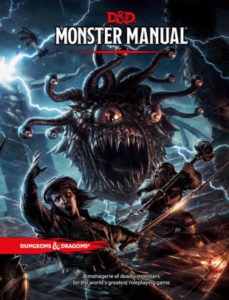
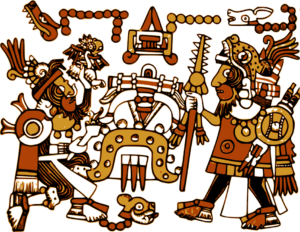
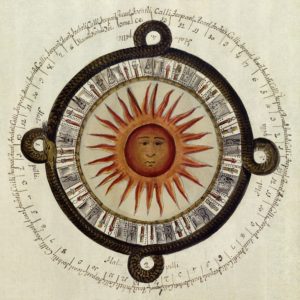
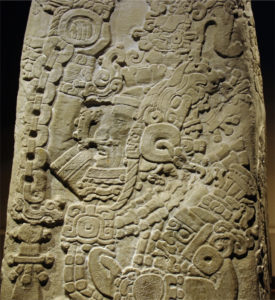
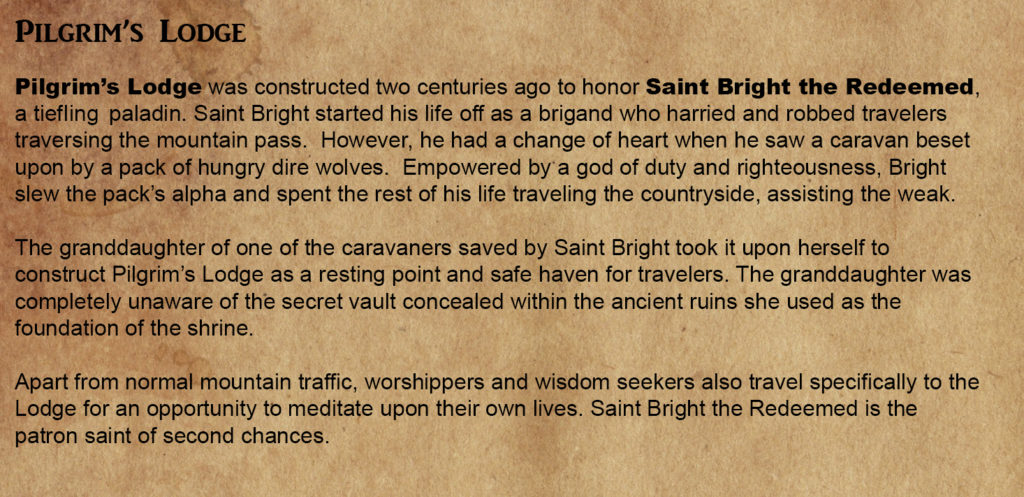
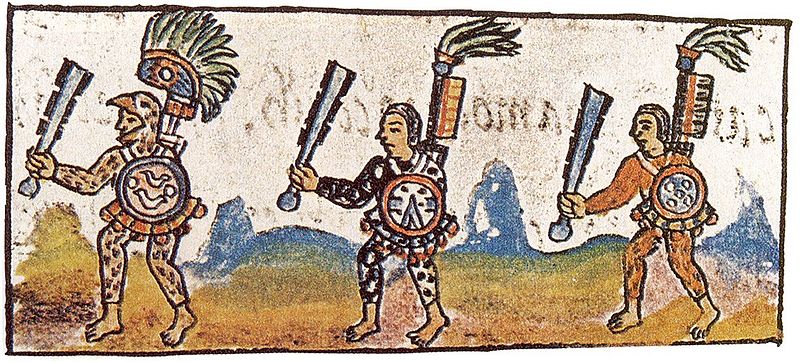
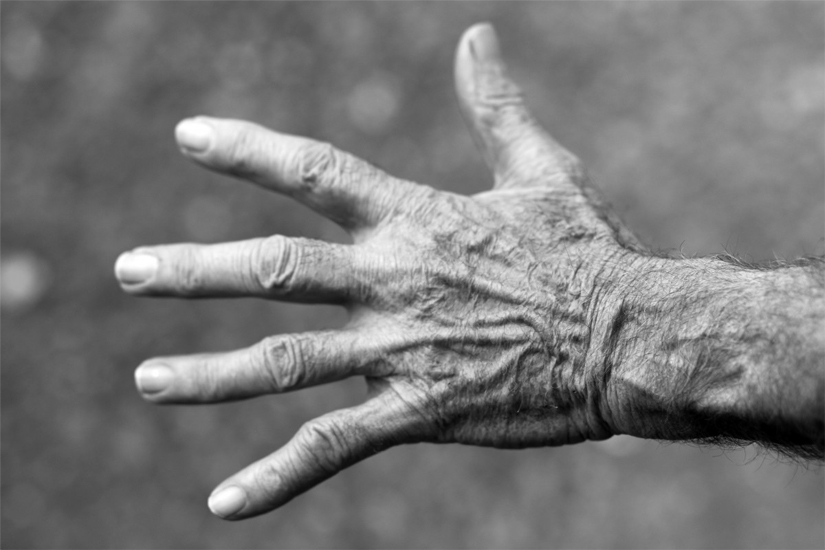
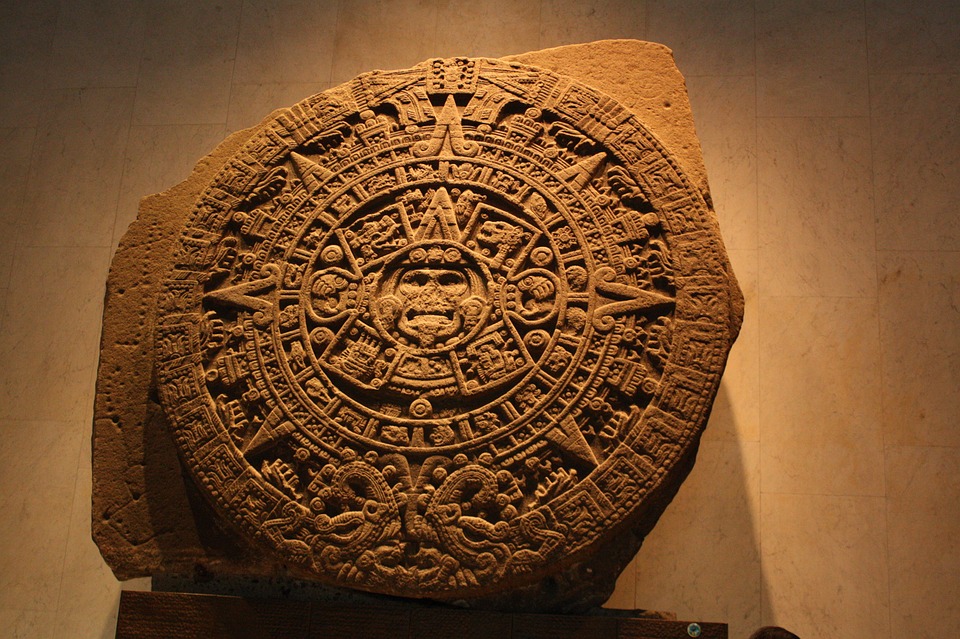
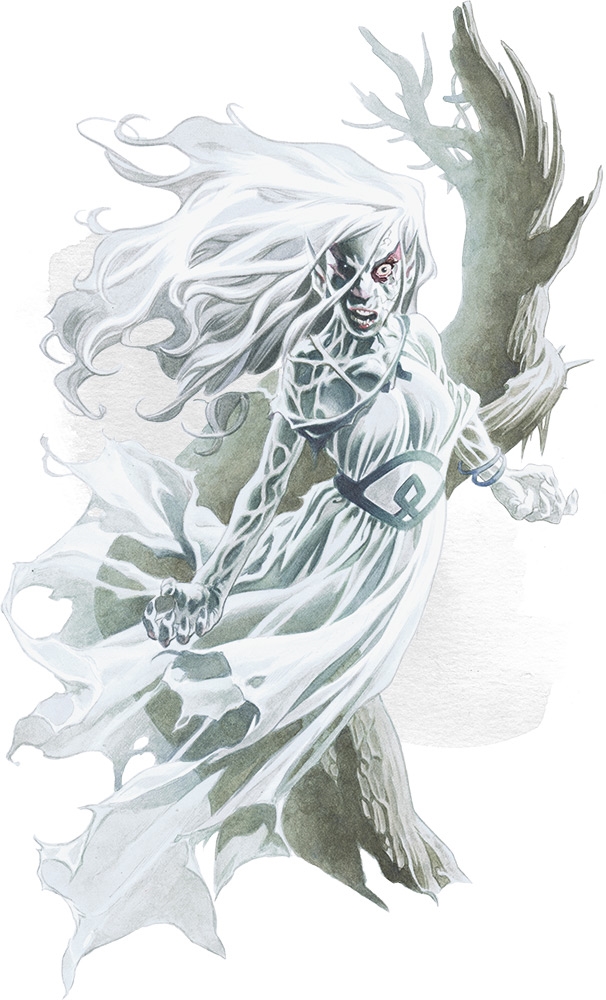
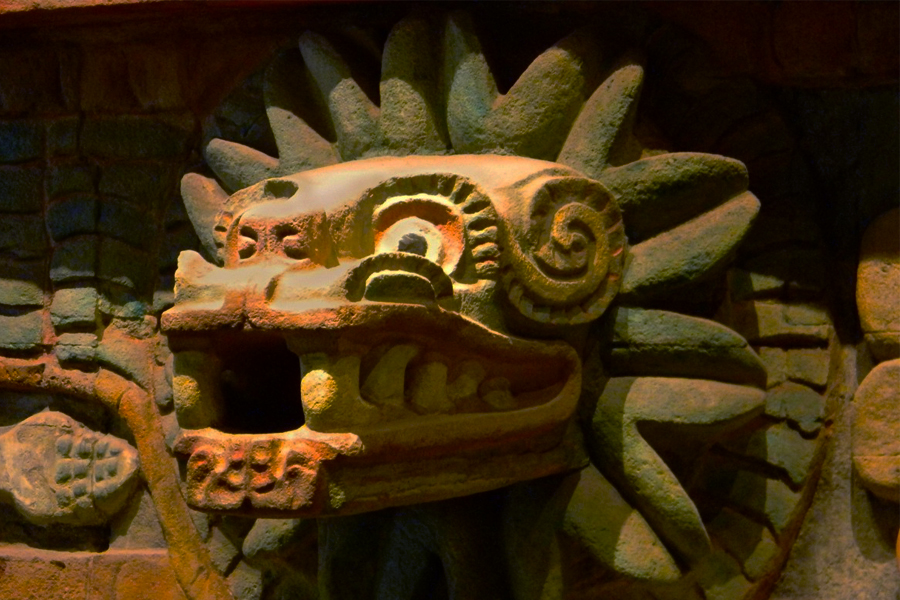
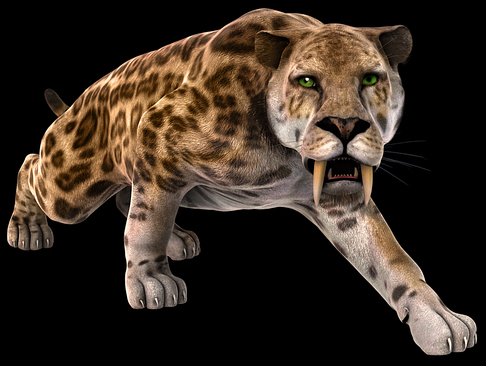
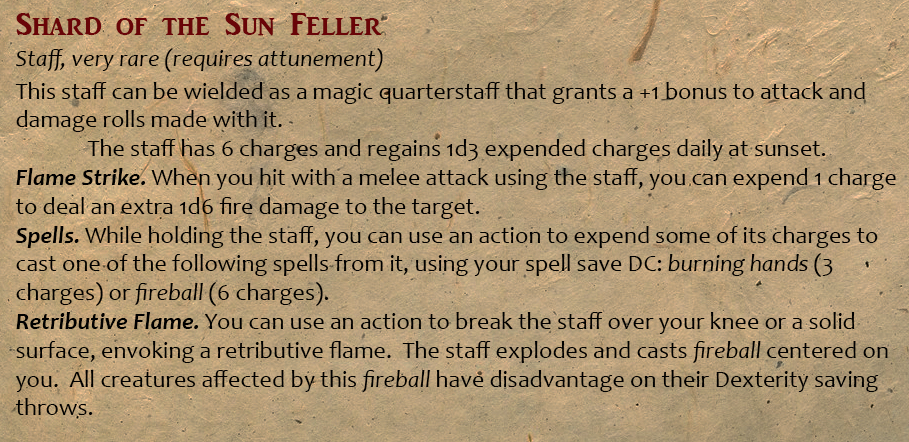


You outdid yourself with this one, Sean. This was super interesting and fun. I love Mesoamerican history and mythology so that was really cool.
Thanks Reece! Hopefully these articles inspire some 40k folks to try D&D.
There’s more dice out there than just d6’s people!
Indeed. Also stoked about Pathfinder 2.0, was reading the rulebook, it looks really good.
I love these articles! Keep them coming!
Thanks Ecstasy! Glad to hear folks are enjoying them! If you ever use any element of the mini-adventure in a session – be sure to let me know!